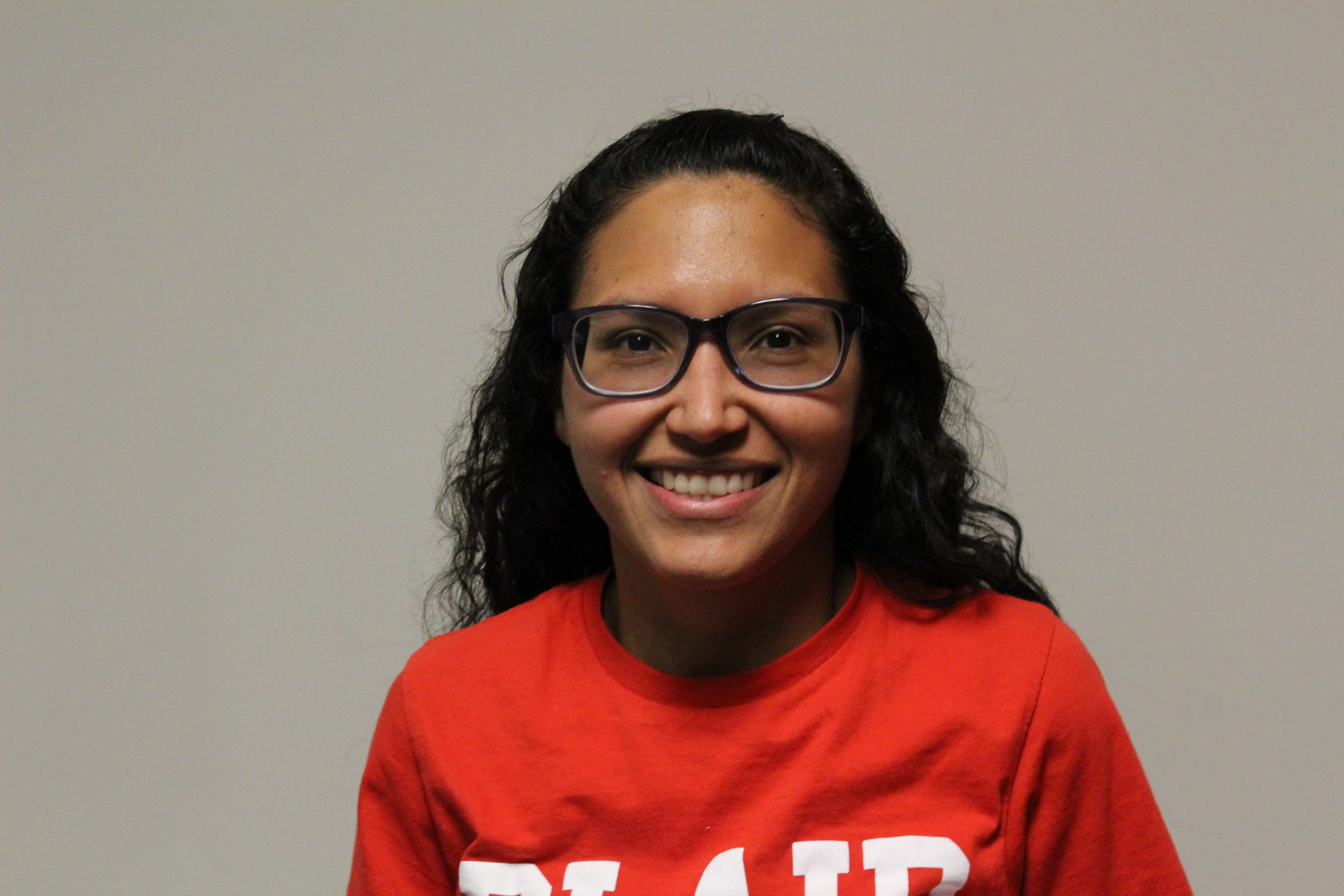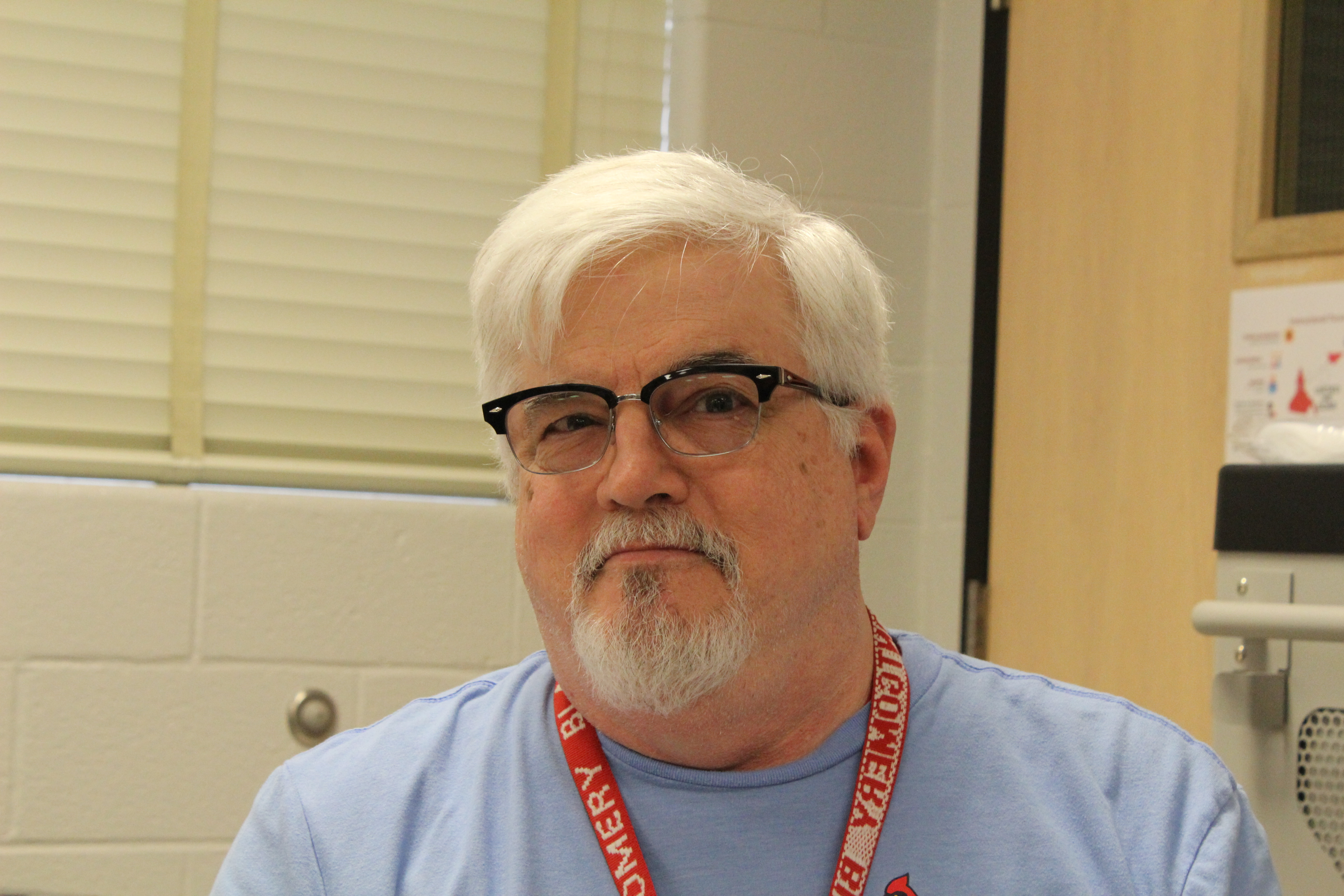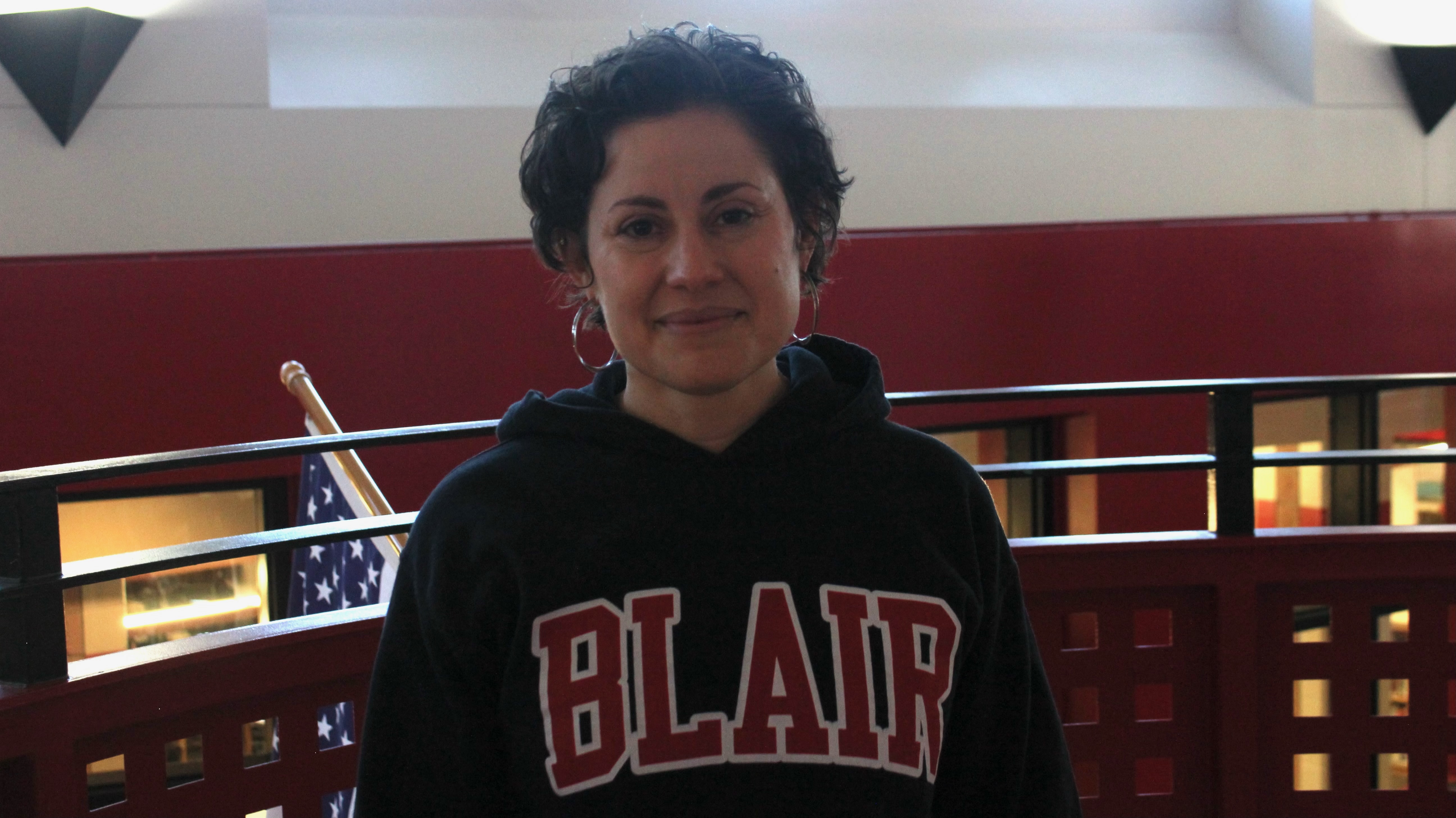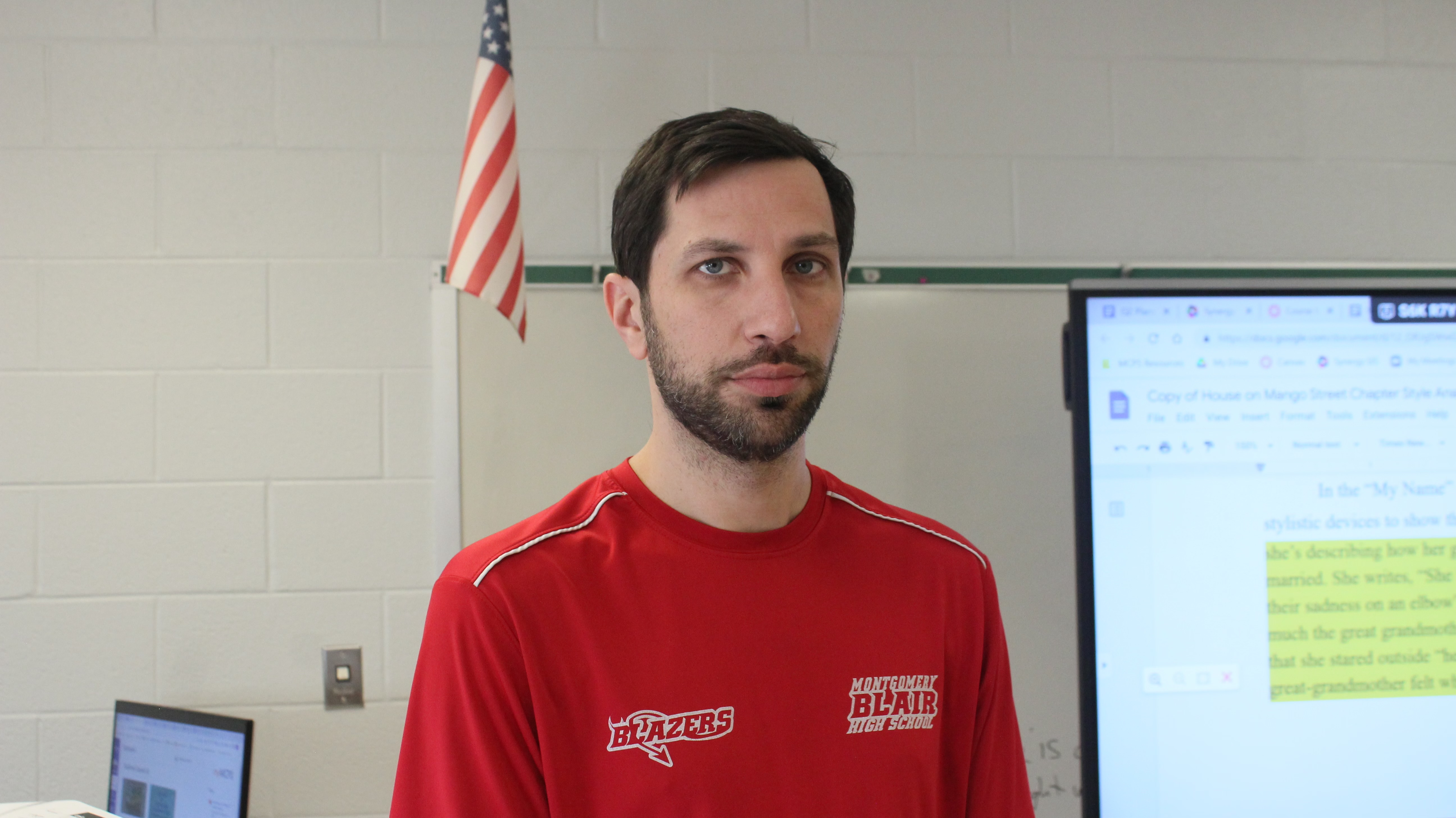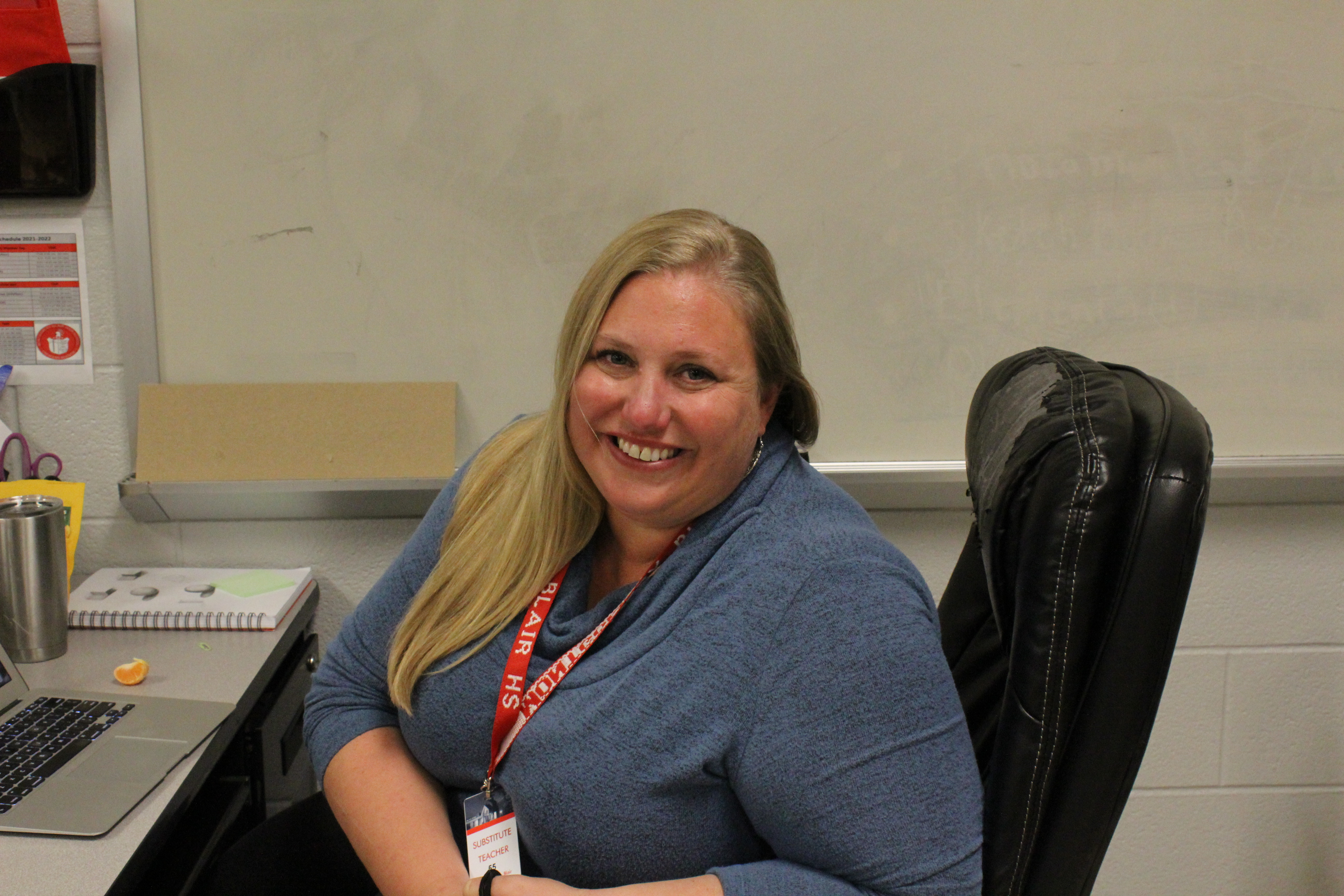The search for subs continues
The substitute teacher shortage at Blair is improving, but still recovering from the pandemic
Already on the phone again immediately after her lunch break, main office secretary Wendy Barillas is having a busy Friday. As Blair’s substitute coordinator, she has to find coverage for all the teachers who are out and make sure any subs that come into the building are checked in and ready to attend their assigned classes on time.
Fridays are often difficult, and on long weekends when even more teachers take Friday off, Barillas has to fill in the gaps. “Fridays are the days that we struggle the most. We sometimes have 20 teachers out, and only between 10 and 15 teachers have subs,” Barillas explains.
MCPS substitutes sign up for jobs online using the Substitute Employee Management
System (SEMS) and can choose which school, rooms and times they work. Bob Quinn became a substitute after he retired about four years ago, and uses the platform to sign up for sub jobs at Blair. “The district uses an online system so that when the teacher knows they’re gonna need a sub, they put it in the system and people like me check periodically,” he explains.
Any left over spots hopefully get picked up by subs who call Barillas each morning and ask for available positions. If empty positions are not filled by the time class starts, administrators or grade level coordinators have to supervise students. “If they don't have any teachers that want to cover or can't cover, [resource teachers] have to go in and cover. Even sometimes the administrators have to step in and stay in a classroom,” Barillas explains.
Adriana Burgos-Ojeda has had this experience herself. The tenth grade assistant principal and substitute administrator works with Barillas to ensure all classes are covered everyday. After expecting last year to be a transition year, the pair hoped this school year would run smoother and be more similar to pre-pandemic years. But issues that began during the pandemic with substitutes continue to linger, specifically decreases in classroom coverage incentives and a noticeable shift in the age of subs.
The pandemic has made sub shortages almost inevitable. Without in-person school at the beginning of the pandemic, there was virtually no need for substitute teachers. Even as students came back in hybrid models in early 2021, teachers rarely needed subs because vacations were uncommon and COVID-19 was the only virus going around schools.
But in-person attendance resuming completely in the 2021-2022 school year changed how teachers and substitutes had been handled since the year prior. Substitutes were suddenly in high demand again— but very low supply. For a multitude of reasons, the nation as a whole plunged into a frantic search for subs, one that lasted through the last day of school and carried into this year.
When MCPS schools fully reopened after online learning, teachers were offered a considerable financial incentive to cover extra classes. Ninth grade English teacher David Goldberg often picked up sixth period classes and recalls, “At the beginning it was more like I felt like I wanted to be a team player, I wanted to help out, but also certainly the money was a nice boost.” But this school year, that stipend has officially been lowered to $15 an hour, or about $11.25 for sixth period and $22.50 for a full block period. After these changes, Goldberg generally only volunteers to cover class for a short time as a favor. “Honestly now I don’t think I’ve taken a sub job this year other than just to help out someone,” he says.
Another important factor which contributed to the sub shortage is the average age of subs. Retired people make up a large percentage of substitutes in America, but they also make up a large percentage of those at high risk for severe COVID-19 complications. This risk outweighed the desire to substitute teach for many people. Substitute teacher Katie Marsico emphasizes that during the pandemic, many subs were hesitant to come in for fear of getting sick. As a full time classroom teacher last year, she recalls having a hard time finding anyone to cover her classes. “Right when we first came back from COVID, nobody wanted to be in a school. [There were] lots of germs available in schools and lots of restrictions that people didn’t want to have to deal with, so it was really hard [to find substitutes],” she says.
Private companies have also been increasing incentives to gain workers, and subbing has historically been low-pay with few benefits. The daily rate for substitutes in MCPS with an associates degree who are assigned to more than 45 days in one position is $204.33. That multiplied by 182 instructional days comes to an annual salary of just $37,188.06. Of course there are other bonuses, and many people don’t rely on substitute teaching as their only form of income, but this number is still extremely low.
The slow return to pre-pandemic sub strategies this year has had many struggles, but the 2022-2023 school year has still fared better in terms of coverage than last. “The subs that used to come often [before the pandemic], [are] coming back little by little,” Barillas notices. An increase in new subs is another way the sub shortage has been alleviated this year. Barillas has seen way more young people coming in as subs, in addition to the typical older retired adults. And, in a time when so many things are unpredictable, Blair is focusing on improving the factors they can control such as impression and reputation. “We try to be nice and respectful and get to know our subs because we want the same people to want to come back to Blair. Then they know our students and they have a relationship with the school,” explains Burgos-Ojeda.
As the pandemic calms down and more people seem comfortable in the school building, the sub shortage will hopefully continue to improve. But Burgos-Ojeda warns that the improvement of the pandemic does not reverse its lasting negative effects on teachers and substitutes. “We’re still impacted. We’re tired, we’re worn out. You don’t bounce back, even if you bounce back from the physical illness, you’re left with everything else,” she reflects.
Kate Gray. Hi! I'm Kate (she/her) and I'm a videographer at SCO. I like swimming, acting, reading, and playing with my dog. More »
Comments
No comments.
Please ensure that all comments are mature and responsible; they will go through moderation.
